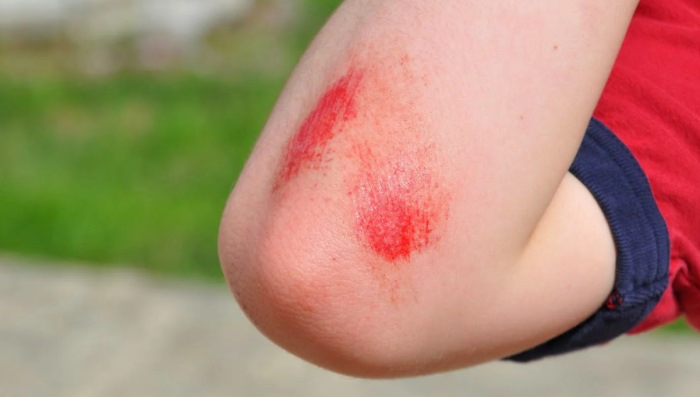People engage in different activities that can lead to daily scrapes and minor cuts. It only takes one wrong move or slip of focus when dealing with metals or sharp objects to get a cut. You can trip on a curb and bruise your knee. It is recommended to seek medical attention for a deep wound, a wound with something embedded in it or bleeding is heavy.
However, you can help yourself or others if they are experiencing a minor scrape or cut. This is a skill you should master to always be on the safer side while doing your daily activities, especially if sharp objects are involved. If you have someone with minor cuts or scrapes and don’t know what to do to make them feel safe, follow the below tips.

Contents
5 Tips to Treat And Care For People Suffering From Minor Cuts And Scrapes
Clean the Cut
Start by cleaning your hands with water and soap before touching an open wound. Clean hands will prevent the development of any infection caused by bacteria. After cleaning your hands, use cool water to rinse the scrape or cut to remove debris and dirt. You can use a cup to pour water on the cut or scrape or hold the injured place under running water.
Remember, using a strong cleaning solution like Iodine, hydrogen peroxide or rubbing alcohol is unnecessary since they may cause strong irritation. Clean running water can do the work pretty well.
Stop the Bleeding
It might seem weird, but small blood can help clean the wound. Abrasions and small cuts or scrapes usually stop bleeding on their own. Bleeding depends on the body part: a cut to the hand or head can cause more bleeding due to many blood vessels. One of the best ways to stop the bleeding is to do dressing. ADAPTIC dressing can come in handy when you want to stop bleeding within minutes.
ADAPTIC will help reduce the pain when changing dressings. The provided gauze offers 100% protection since it will not stick to the wound. Therefore, for comfort and better healing, it is recommended to choose the ADAPTIC kit. After dressing the wound, avoid lifting the gauze or cloth to check if the wound has dried or healed. Disturbing the wound can cause bleeding.
Keep applying more cloth or gauze on the wound as you apply pressure if the bleeding continues through the dressing. Make the wounded raise the hand above the head if the cut is on the hand to slow the bleeding. However, get medical attention if the bleeding doesn’t stop or spurt blood after trying different dressings.
Cover the Scrape or Cut
Once the wound is clean and the bleeding has stopped, use a sterile gauze pad or bandage and tape to cover it. Alternatively, you can leave the wound open or uncovered if it is small or located in an undisturbed area (it won’t get dirty or rubbed by clothes). However, it is advised to cover the wound to prevent reopening it and help prevent infection.
Also, help change the bandage every day or dress more often when dirty. You can make the infection less likely by advocating for antibiotic ointment. Use a thin layer of the ointment on the wound before gauze dressing or bandage to make the scrapes and cuts moist and clean. Antibiotic ointment can curb scarring.
Ask for Advice if a Tetanus Shot is Necessary
Some wounds may need extra treatment and a tetanus shot can be part of it, while others will need a normal DIY dressing. It is good to ask if the wound you are addressing needs a tetanus shot or not from a professional. If a rusted object cuts the person, you might need to take them for a tetanus shot.
Watch for Infection Signs
You should be vigilant for infection signs, especially if the individual injured is a child. Look for any signs of infections and call the doctor immediately. The common signs you should be aware of include increasing pain, swelling, redness, drainage from the scrape or cut, fever, pus and red marks around the wound area.
Other than that, scrapes and cuts will only take a few days to heal. The scab will help in protecting the wound from germs and dirt as the new skin grows underneath it. You can remove the bandage once the scab has formed since the wound has all the protection it needs to heal completely.
Ensure they are not scratching even though the scab or healing wound might be itchy. Scratching can result in bleeding, which will need you to start the whole dressing process again. Ensure the scab is not disturbed in any way and after a few days, it will fall off without any help.
Leave a Reply
You must be logged in to post a comment.